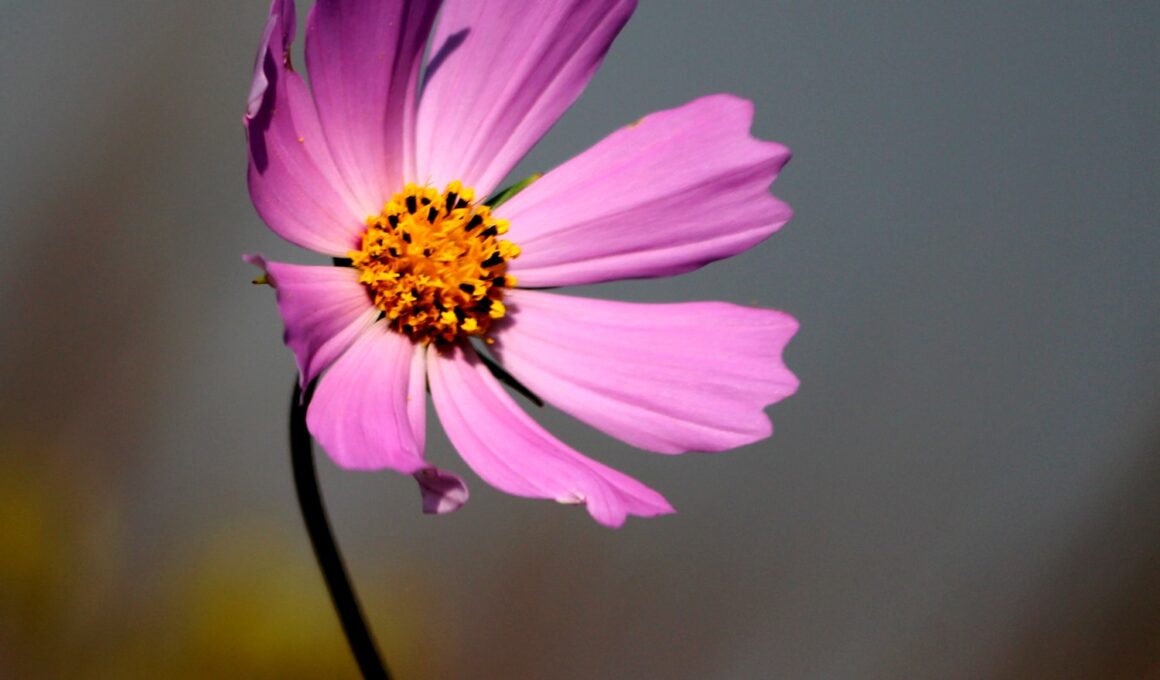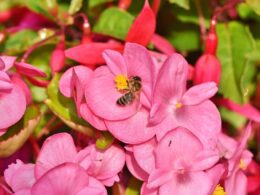Congratulations on growing cosmos! These beautiful flowers are easy to grow and produce bright, colorful blooms that can last for months. But as with any flowering plant, there comes a time when the blooms start to fade and the plant needs some attention. Don’t worry, though – taking care of your cosmos after they finish flowering is easy.
Here are some simple steps to follow to keep your plants healthy and looking their best.
First, you’ll want to deadhead the spent blooms. This means removing the flowers that have already bloomed and started to wither. Deadheading encourages the plant to produce more flowers, so don’t be shy about snipping off those faded blooms. If you leave them on the plant, they’ll eventually turn brown and start to look unsightly.
Deadheading is also a good opportunity to inspect your plants for any signs of disease or pests, so keep an eye out for anything unusual.
Deadhead the Spent Blooms
Removing the withered blossoms of the cosmos plant is an essential task to promote healthy growth and continued blooming. Deadheading is the process of removing the spent blooms from the plant. This pruning technique encourages the plant to produce more flowers and prevents it from going to seed too early. Deadheading also helps to keep the plant looking neat and tidy.
To deadhead your cosmos plant, simply pinch off the spent blooms with your fingers or use a pair of sharp scissors or pruning shears. Be sure to cut just above the first set of healthy leaves. This will encourage the plant to produce new growth and more flowers.
You can also compost the dead blooms and any other plant material you remove from your garden. This will help to enrich your soil and promote healthy plant growth.
Deadheading your cosmos plant is a simple and effective way to promote healthy growth and continued blooming. By removing the spent blooms, you encourage the plant to produce more flowers and prevent it from going to seed too early. Remember to compost any plant material you remove from your garden to help enrich your soil. With a little bit of care and attention, your cosmos plant will continue to bloom beautifully throughout the season.
Let the Flowers Go to Seed
It’s time to let those vibrant blooms fulfill their destiny and produce a new generation of beautiful cosmos. Instead of cutting off the spent blooms, let them go to seed.
This will not only save you time and effort but also provide a habitat for wildlife. Collecting seeds from your cosmos plants is easy and can be done by simply allowing the seed pods to dry on the plant.
Once they are fully dry, remove the pods and break them open to collect the seeds. You can store the seeds in a dry place for planting next season or share them with friends and family.
By allowing your cosmos flowers to go to seed, you are also providing a habitat for birds and other wildlife. The seeds will attract a variety of animals that rely on them for food, including finches and sparrows.
So, sit back and enjoy the beauty of your cosmos plants as they complete their life cycle, knowing that you are also contributing to the ecosystem around you.
Cut Back the Plants
Before you get too attached to your beautiful blooms, remember to cut back the plants to ensure a healthy and thriving garden for future seasons. Pruning techniques are essential in maintaining the health and longevity of your cosmos flowers.
Start by removing any dead or diseased branches and stems. This will prevent any further damage from spreading to the rest of the plant.
Next, take a step back and assess the overall shape of the plant. Look for any branches that are crossing or rubbing against each other, and remove them. This will allow for better air circulation and sunlight penetration. Additionally, cutting back the plant will encourage new growth and promote bushier, fuller plants next season.
Once you have finished pruning, consider composting the cuttings. Composting options range from creating your own compost pile to using a compost bin. Not only is composting an eco-friendly option, but it also provides your garden with nutrient-rich soil for future seasons.
By following these simple pruning techniques and composting options, you can enjoy a healthy and thriving garden year after year.
Plant Other Flowers
Now that you’ve given your cosmos flowers some TLC, why not add some variety to your garden by planting other beautiful flowers that will complement your cosmos and bring even more color and life to your green space?
Companion planting is a great way to achieve this. You can choose flowers that not only look good together but also have beneficial effects on each other. For example, marigolds are known to repel pests and attract beneficial insects, while lavender attracts bees and butterflies.
Before planting your new flowers, you’ll want to make sure the soil is prepared. Start by removing any weeds or debris from the area. Then, loosen the soil with a garden fork or tiller. If the soil is compacted, you may need to add some organic matter, such as compost or aged manure, to improve its texture and fertility. Finally, add a balanced fertilizer to give your new plants a good start.
With a little bit of planning and preparation, you can turn your garden into a colorful and vibrant oasis. Adding companion plants and preparing the soil will not only improve the aesthetics of your garden but also support the health of your plants.
So, go ahead and experiment with different flower combinations and see what works best for you and your garden. Happy planting!
Prepare for Next Season
Get ready for next season by prepping your garden now, so you can enjoy even more stunning blooms and vibrant colors.
After your cosmos have finished flowering, it’s time to start preparing the soil for the next planting season. One way to do this is by practicing composting techniques. Composting is a natural way to improve soil health by adding nutrients and organic matter back into the soil.
To prepare your garden for next season, start by removing any dead plants and weeds. Once you have cleared the area, it’s time to start prepping the soil. First, loosen the soil with a garden fork or tiller. This will help to improve soil drainage and air circulation.
Next, add a layer of compost to the soil. Compost can be purchased at a garden center, or you can make your own by using kitchen scraps and yard waste.
By improving the soil in your garden, you’ll be able to grow healthier, more vibrant plants. In addition to composting, you can also add other organic matter to the soil, such as leaves, grass clippings, and straw. By incorporating these materials into the soil, you’ll help to improve its texture and fertility.
With a little bit of preparation now, you’ll be able to enjoy a beautiful, thriving garden next season.
Frequently Asked Questions
Can cosmos be grown in containers?
You can definitely grow cosmos in containers, but there are some limitations to keep in mind. Make sure your container is at least 12 inches deep to accommodate the long roots of the plant.
Additionally, be aware that cosmos can grow quite tall, so choose a container that is wide enough to provide stability. When it comes to soil mix, use a well-draining potting soil with added perlite or sand to ensure good drainage.
Avoid using heavy garden soil, as it can lead to waterlogged roots. With the right container and soil mix, you can enjoy beautiful cosmos blooms on your balcony, patio, or porch.
Are there any pests or diseases that commonly affect cosmos plants?
To keep your cosmos plants healthy and thriving, it’s important to be aware of common pests and diseases that can affect them.
Preventing infestations is key, so regularly inspect your plants for any signs of trouble. Look for symptoms like wilting, yellowing leaves, holes in the leaves, or small insects on the plant.
If you do spot a problem, act quickly to identify the culprit and treat the issue with the appropriate method. Some common pests that may attack your cosmos include aphids, spider mites, and whiteflies, while diseases like powdery mildew and rust can also be a concern.
By staying vigilant and taking action when necessary, you can help ensure that your cosmos plants stay healthy and beautiful all season long.
How often should cosmos be watered?
To ensure your cosmos plants thrive, it’s important to establish a watering schedule that takes into account the soil moisture. A good rule of thumb is to water your cosmos plants deeply once a week, making sure the soil is moist but not waterlogged.
Keep an eye on the weather, as hot and dry conditions may require more frequent watering. It’s important to avoid letting the soil completely dry out, as this can cause stress to the plants and affect their growth.
By maintaining a consistent watering schedule, you’ll promote healthy growth and vibrant blooms throughout the season.
What is the best time of day to deadhead cosmos blooms?
Want to keep your cosmos plants blooming all season long? Deadheading is the key, and timing is everything.
When it comes to deadheading cosmos blooms, the best time of day is in the morning. This allows the plant to recover throughout the day and produce new blooms in the evening. To deadhead, simply snip off spent blooms just above a leaf node. Not only will this promote new growth, but it’ll also keep the plant looking tidy.
Additionally, to prolong the blooming season of your cosmos plants, make sure to water them consistently and fertilize every two to three weeks. With these tips, you’ll have a beautiful and flourishing cosmos garden all season long.
Can cosmos be propagated from cuttings or division?
If you’re wondering how to propagate cosmos, there are two main methods: cuttings and division. For cuttings, take a stem cutting with a few leaves and plant it in well-draining soil. Keep the soil moist and in a warm, bright area until roots develop.
For division, dig up the entire plant and carefully separate the roots into smaller clumps. Replant these clumps in soil that has good drainage and plenty of organic matter.
When it comes to soil requirements, cosmos prefer well-draining soil that’s not too rich in nutrients. They can tolerate a range of soil types, but they don’t like to be waterlogged. So make sure the soil drains well and water only when the top inch of soil feels dry.
With these propagation methods and soil requirements in mind, you can easily expand your cosmos collection and enjoy their colorful blooms year after year.
Conclusion
Now that your cosmos have finished flowering, there are a few things you can do to ensure a successful next season.
First, deadhead any spent blooms to encourage new growth and discourage disease. You can also let some of the flowers go to seed, which will not only provide food for birds but also lead to volunteer plants next year.
Next, consider cutting back the plants to promote bushier growth and prevent them from getting too tall and leggy. If you’re looking to add more color to your garden, consider planting other flowers that will bloom into the fall season.
Finally, start preparing your garden beds for next year by adding compost and mulch to nourish the soil and protect it from winter weather. With these simple steps, your cosmos will continue to brighten up your garden for years to come.









